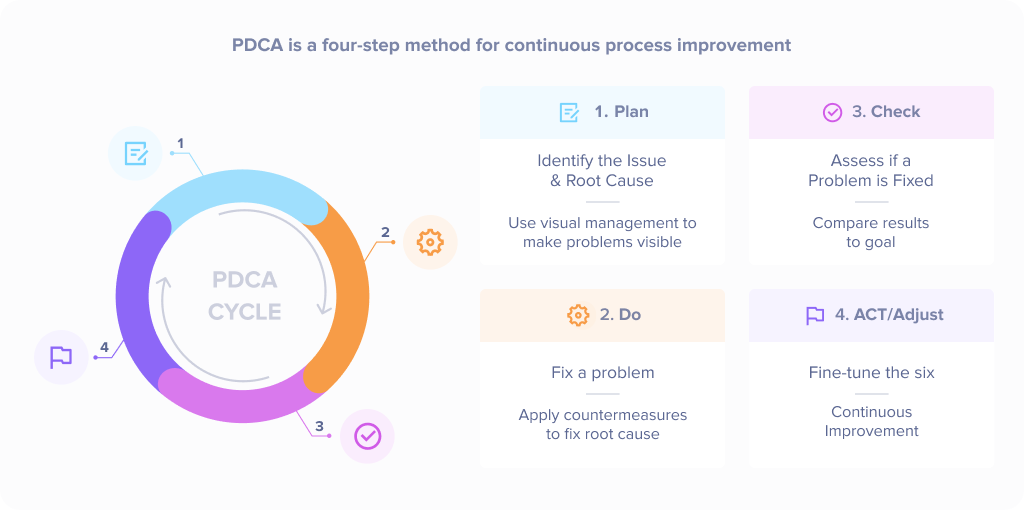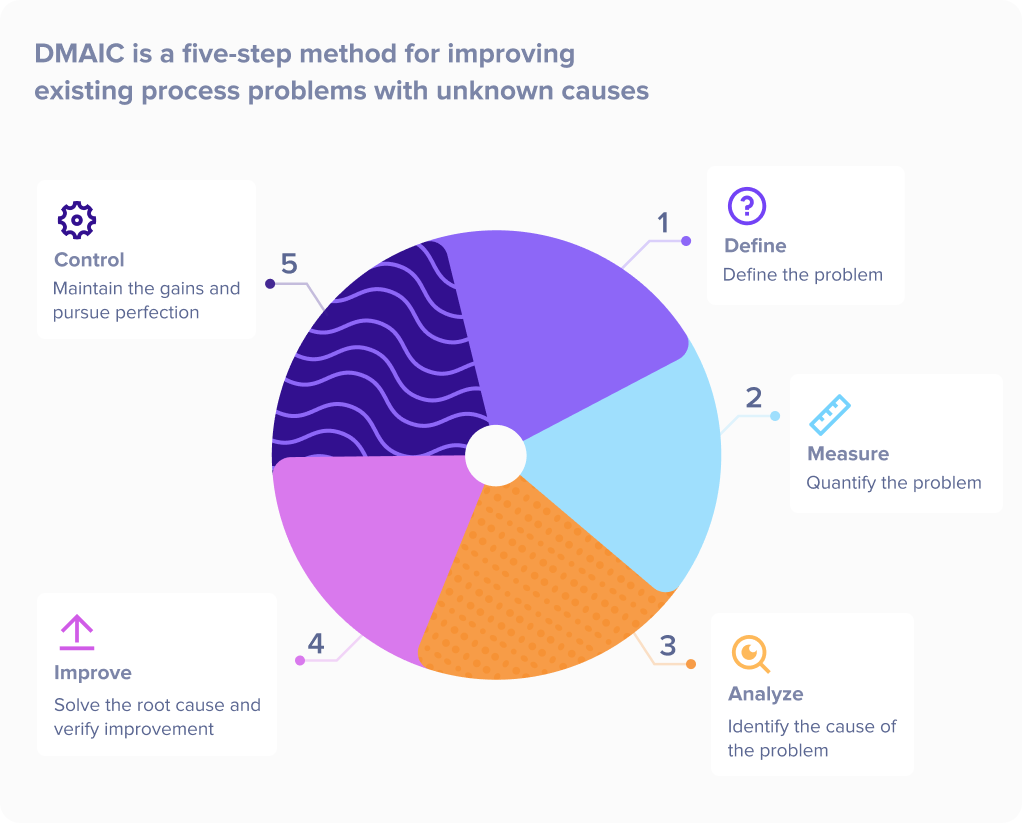The father of Lean, TPS, was developed by Taiichi Ohno at Toyota to improve manufacturing and logistics, minimize cost, and reduce waste of all kinds, including removing time from processes and improving flow. Lean became a generic version of TPS, and although often used synonymously, there is a difference to the very discerning eye.


Kaizen (roughly translated to “continuous improvement.”) is a core principle of TPS focused on setting a gradual adoption of small but significant improvements by involving all employees and building a company culture of continuous improvement. Objectives include standardizing work, elimination of waste, and just-in-time (JIT) inventory practices. The core beliefs of kaizen are:
In 1986, Mikel Harry and Bill Smith from Motorola invented Six Sigma and the DMAIC improvement method—Define, Measure, Analyze, Improve and Control—which guides practitioners to systematically define and address the root causes of process problems and then maintain the gains.
As well as a method for process improvements, Six Sigma is a philosophy, a mindset, a goal, and a measurement system. The data-driven approach aims at limiting the number of errors or defects in a process to what is considered to be near perfection, a maximum of 3.4 occurrences per million opportunities (units or events.)
For DSOs, Six Sigma can be used for such things as improving material flow (the movements of your supplies) and gaining better organization, allowing you to quickly and easily find what you need when you need it.
[H2] Lean Six Sigma
As you’ve probably guessed, Lean Six Sigma is the melding of the two continuous improvement methods. It provides a vast tool kit of problem-solving tactics and reaps the benefits of both systems. Lean Six Sigma benefits include:
These philosophies and business methods not only improve profits but engage employees, value their intricate knowledge of business activities and processes, and recognize them as the best resources for analyzing and enhancing procedures. Getting your buy-in and empowering employees to positively affect their work environment makes for happier employees and better margins.
These principles are evidenced throughout Method, which was designed with the goal of streamlining and improving dental purchasing processes, increasing efficiencies, and decreasing the costs of dental procurement. They’re reflected in the dental inventory control methods and procurement analytics that allow you to lean out your inventory and improve your cash flow. For example, the purchase order entry process minimizes time requirements and eases workflow throughout the Procure-to-Pay (P2P) cycle while reducing losses for your dental practice or DSO. And, of course, they are the main driver behind our at-your-fingertips market pricing and request for quote management process.
Regardless of the industry, lean tools can be used to gain quantifiable improvements by minimizing inventory levels, reducing waste, limiting losses, improving workflows, and reducing the likelihood of human error.
Like any other business looking to improve its EBITDA, your DSO needs to drive quantifiable improvements. Enter Lean Six Sigma.
Further powered by the automation Method brings, these methodologies are the backbone of profit-enhancing procurement practices. Taking it one step further by implementing the principles and utilizing the tools you see fit into the fabric of your organization can help you meet the challenges you are facing today while propelling your growth for tomorrow.
Contact Method Procurement Technologies today to get more information on how we can help you streamline your dental practice procurement strategy.
Method Procurement Technologies gives independent dental practices and DSOs the inventory management and procurement capabilities they need to succeed. With our full, end-to-end solution, ordering dental supplies is straightforward and hassle-free.
Learn how Method Procurement's spend management solutions can improve your bottom line. Get in touch with our team today or request a demo to see it for yourself.









